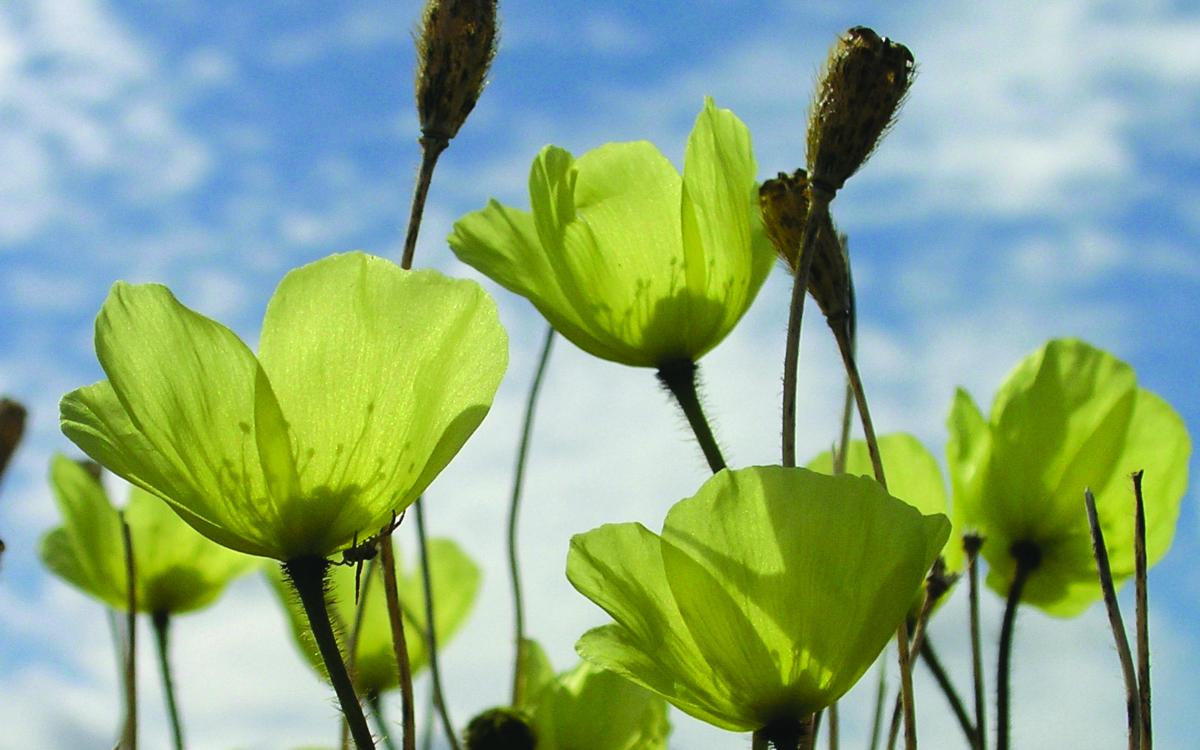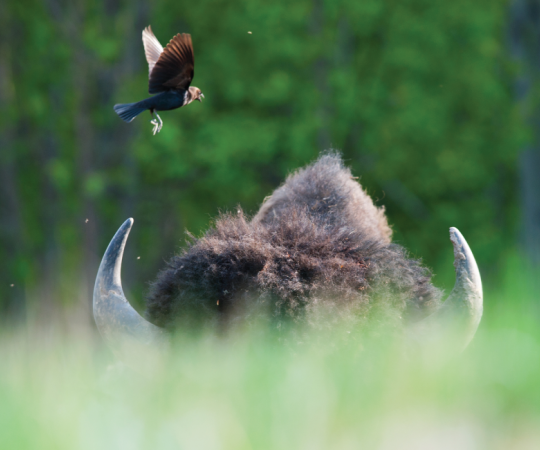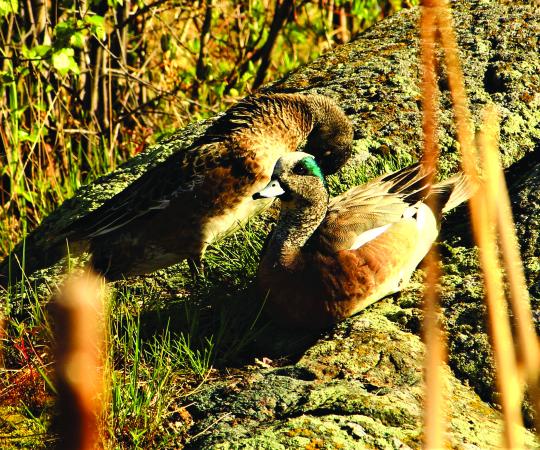With the coming of summer, plants green up at the edges of shrinking drifts, buds swell and flowers appear as if by magic. Some, including the purple mountain saxifrage and the crowberry, even begin flowering while still under the snow. In late June and early July, blooms spread like Oriental carpets across the land. By mid-August, only a few are still blooming; others are producing seeds. By September, summer’s mostly over, but the berries come into prominence and wildlife and people glean the land for these tiny jewels. It’s all condensed into a few short weeks.
Flowering plants in the Arctic and subarctic show many adaptations to life in a cold climate with a short growing season and prolonged periods of darkness. Here are some you can easily observe yourself.
SOLAR COLLECTORS
Arctic Poppy (Papaver radicatum)
Arctic poppies (pictured above) Tilt Toward the sun to heat where the seeds are forming.
Where: Dry tundra and gravel ridges
Poppies have long stems and flowers with large petals. In a process called heliotropism, poppies track the sun as it appears to move across the sky and do this through 24 hours of daylight above the Arctic Circle. Since poppies are radially symmetrical, this is a bit of an optical illusion: a change in fluid pressure in specialized cells in the stem causes the bloom to tilt toward the sun. The petals also flex to focus the sun’s rays on the darker capsule where the seeds develop, making inside the flower’s cup up to 10°C warmer than the ambient temperature. This encourages basking by mosquitoes, bumblebees and other pollinators, a benefit to the plant. Arctic poppies can digest their own petals, recycling nutrients; dark green crumpled pieces hanging from the flowerhead are partially digested petals.

TINY GREENHOUSES
Bladder Campion (Silene uralensis)
Bladder campion has blooms that act as Tiny green-houses.
Where: The edges of tundra ponds or streams and alpine areas
On moist shorelines, you may find small plants with expanded translucent chambers that glow so they look like something out of a Dr. Seuss book. The blooms of these purple bladder campions act as micro-greenhouses. They lack obvious petals and the thin walls of the inflated calyx, at the base of the flower, allow the sun to warm the air within, speeding the development of the seeds. The opening faces down, holding the warm air against the plant’s ovaries. As the seeds mature, the flowerhead rotates to face upwards.
INSULATION
Woolly Lousewort (Pedicularis lanata)
Where: Moist Arctic or alpine tundra or taiga flood plains
In early July, hiking the tundra, you may come upon a field of what looks like glowing candles that appear silvery and fluffy. Take a closer look and you may see pink flowers peeking out from the furry pelt. These are woolly louseworts. Their translucent hairs allow the heat of the sun to penetrate to the stem and developing flowers, while insulating the plant against drying winds. As the flowers expand through the hairs, they attract pollinators, often bumblebees. By the time the seeds are developed, the hairs have long since dried up and fallen off.

PROSTRATE GROWTH FORM
Alpine Azalea (Kalmia procumbens)
Alpine Azalea clings to the ground to shelter from icy winds.
Where: Dry ridges and esker crests
As you hike along the crest of a ridge, you may notice a tiny plant resembling an embroidery sample, with tiny oval leaves, twisted stems and pink starry flowers with red bases. The alpine azalea shelters from icy and desiccating winds by clinging close to the ground, a tactic used by many Arctic plants. The 1.5-centimetres-tall flowers start out low in the foliage, but push up, making it easier for pollinators to find them. Seeds are borne on short stiff stalks.

CUSHION PLANTS
Moss Campion (Silene acaulis)
Moss Campion is actually a tree with just its twigs and leaves above ground.
Where: Well-drained slopes, dry ridges, eskers and rock outcrops
The moss campion demonstrates the super-compact cushion plant growth form. It’s actually a tree, but most of its branches, trunk and roots are under the surface of the ground for protection. The twigs and leaves are tightly bunched into a dense cushion that extends only about 1.5 centimetres above ground level. They connect to thicker branches and a short, almost non-existent “trunk” and then a long taproot that extends up to 30 centimetres into the ground. It’s effective: Snow accumulates in the cushion and forms an insulating drift, and the strong winter winds pass over it. In summer, the thick leaves and twigs hold moisture within the plant and in the soil below its foliage. Showy pink flowers extend out of the cushion, attracting pollinators.

STIFF STEMS, ELEVATED SEEDS
Prickly Saxifrage (Saxifraga tricuspidata)
Prickly Saxifrage features rosettes of leaves tipped with spines.
Where: Rock outcrops, dry ridges, boreal forest and tundra
On any hike across taiga or tundra, you will see many plants with stiff upright stems bearing seeding structures. The prickly saxifrage is a good example. Succulent rosettes of leaves, each tipped with three spines, cluster to form a dense mat that protects the base of the plant. Stalks support clusters of orange-spotted white flowers, each with two back-to-back capsules bearing the ovules, which allow seeds to escape only through small holes in their tops. Seeds mature late in the season and are shaken out to blow across the snow. The Arctic poppy employs a similar strategy.
These are only a few of the adaptations in flowering plants in the North. As you explore under the midnight sun, spend a bit of time on your stomach in the tundra, enjoying the pageant of the flowers.









